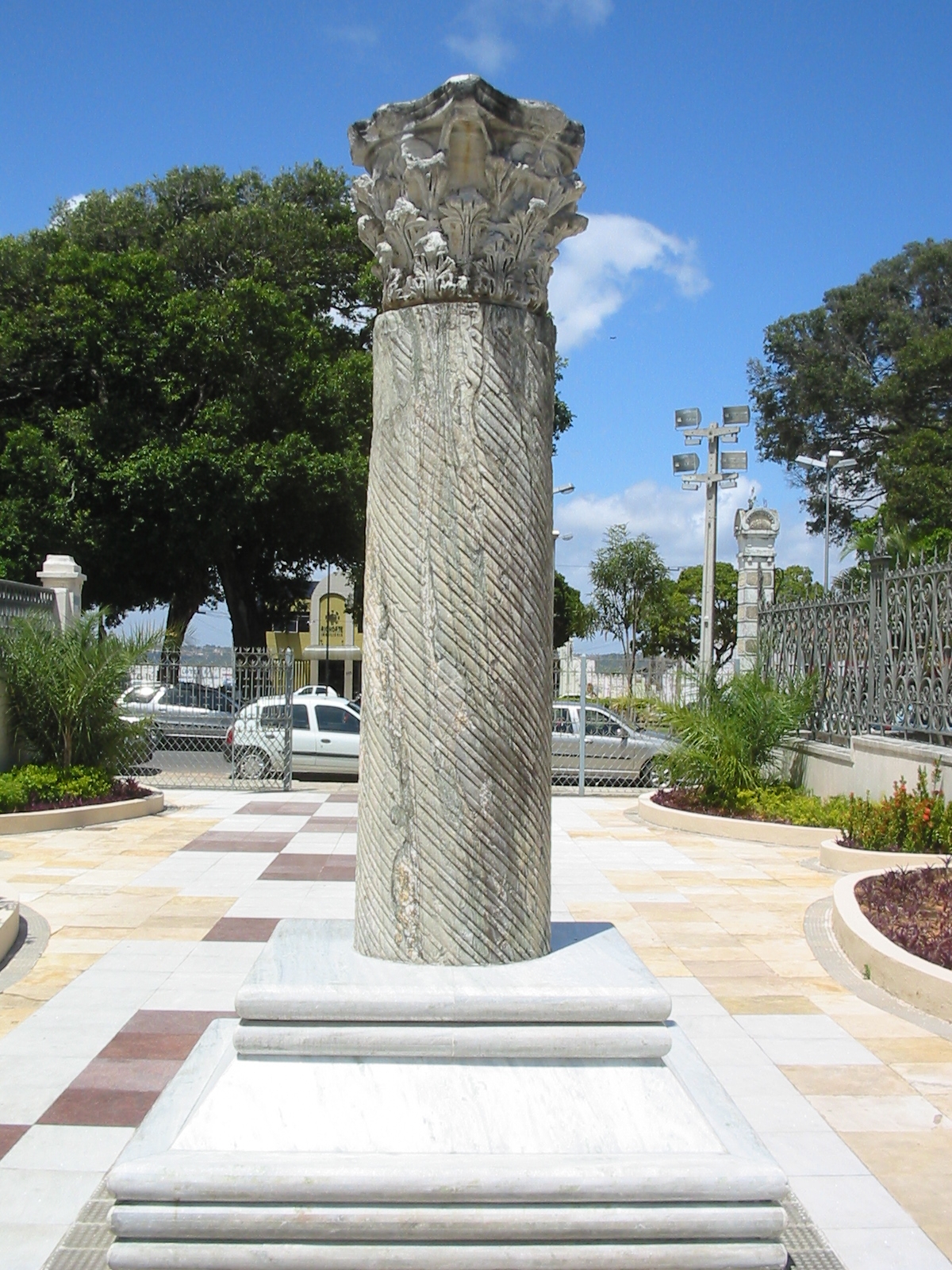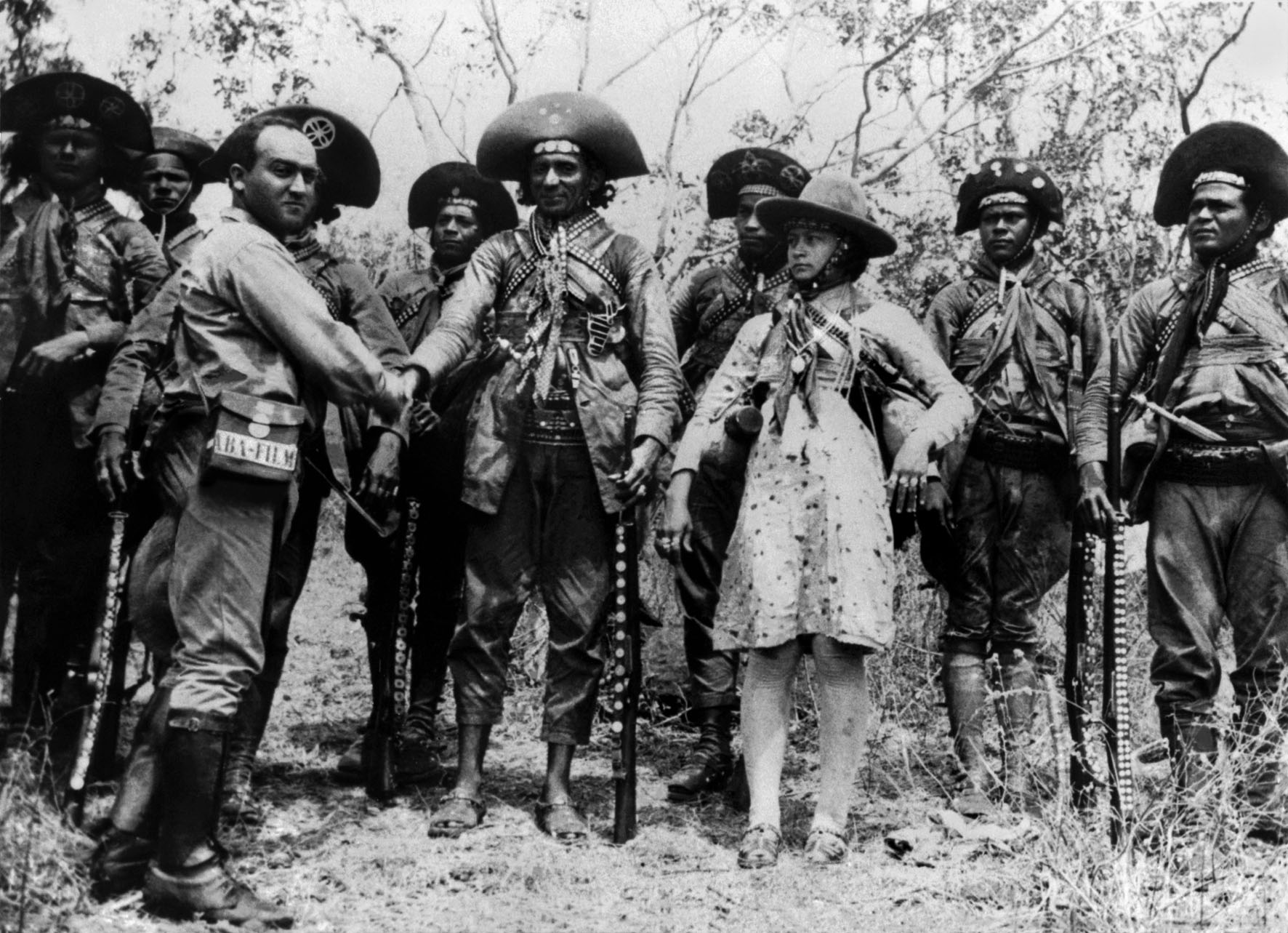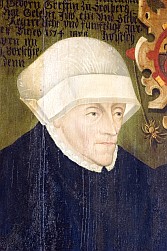|
Mossoró
Mossoró () is the second most populous city in the state of Rio Grande do Norte, Brazil, and also the largest municipality of that state. It is equidistant (four hours' drive) from Natal (approximately 277 km or 172 miles), the state capital of Rio Grande do Norte, and from Fortaleza (approximately 260 km or 161.5 miles), the capital of the state of Ceará. It is also in the heart of Brazil's salt production area. Situated in the Oeste Potiguar mesoregion, Mossoró is the country's largest land-based petroleum producer. History To Brazilians, the main historical distinctions of the city are the driving off an attack by Lampião and his gang of "social bandits" (see Cangaço) that plundered entire towns in the ''sertão'' during the 1920s and 1930s; and also the fact that the city freed its slaves five years before the Lei Áurea abolished slavery in the rest of the country in 1888. Mossoró was also the first city to give women the right to vote in Brazil (Professo ... [...More Info...] [...Related Items...] OR: [Wikipedia] [Google] [Baidu] |
Rio Grande Do Norte
Rio Grande do Norte (, , ) is one of the states of Brazil. It is located in the northeastern region of the country, forming the northeasternmost tip of the South American continent. The name literally translates as "Great Northern River", referring to the mouth of the Potengi River. The capital and largest city is Natal. The state has 410 km (254 mi) of sandy beaches and contains Rocas Atoll, the only atoll the Atlantic Ocean. The main economic activity is tourism, followed by the extraction of petroleum (the second largest producer in the country), agriculture, fruit growing and extraction of minerals, including considerable production of seasalt, among other economic activities. The state is home to 1.7% of the Brazilian population and produces 1% of the country's GDP. In 2000-17 the murder rate rose by 655%, making Rio Grande do Norte the state with the highest murder rate in Brazil: 63.9 per 100,000. Tourist attractions in the state include the Cashew of Pirang ... [...More Info...] [...Related Items...] OR: [Wikipedia] [Google] [Baidu] |
Northeast Region, Brazil
The Northeast Region of Brazil ( pt, Região Nordeste do Brasil; ) is one of the five official and political regions of the country according to the Brazilian Institute of Geography and Statistics. Of Brazil's twenty-six states, it comprises nine: Maranhão, Piauí, Ceará, Rio Grande do Norte, Paraíba, Pernambuco, Alagoas, Sergipe and Bahia, along with the Fernando de Noronha archipelago (formerly a separate territory, now part of Pernambuco). Chiefly known as ''Nordeste'' ("Northeast") in Brazil, this region was the first to be colonized by the Portuguese and other European peoples, playing a crucial role in the country's history. ''Nordestes dialects and rich culture, including its folklore, cuisines, music and literature, became the most easily distinguishable across the country. To this day, ''Nordeste'' is known for its history and culture, as well as for its natural environment and its hot weather. ''Nordeste'' stretches from the Atlantic seaboard in the northeast ... [...More Info...] [...Related Items...] OR: [Wikipedia] [Google] [Baidu] |
Lampião
"Captain" Virgulino Ferreira da Silva (), better known as Lampião (older spelling: ''Lampeão'', , meaning "lantern" or "oil lamp"), was probably the twentieth century's most successful traditional bandit leader. The banditry endemic to the Brazilian Northeast was called ''Cangaço''. ''Cangaço'' had origins in the late 19th century but was particularly prevalent in the 1920s and 1930s. Lampião led a band of up to 100 ''cangaceiros'', who occasionally took over small towns and who fought a number of successful actions against paramilitary police when heavily outnumbered. Lampião's exploits and reputation turned him into a folk hero, the Brazilian equivalent of Jesse James or Pancho Villa. Biography Early life Virgulino was born on June 7, 1897, near the village of Serra Talhada, on his father's 'ranch' named ''Passagem das Pedras'' in the semi-arid backlands (''sertão'') of the state of Pernambuco. He was the third of nine children of José Ferreira da Silva and Maria Lopes ... [...More Info...] [...Related Items...] OR: [Wikipedia] [Google] [Baidu] |
Cangaço
''Cangaço'' () was a phenomenon of Northeast Brazil in the late 19th and early 20th centuries. This region of Brazil is known for its aridness and hard way of life, and in a form of "social banditry" against the government, many men and women decided to become nomadic bandits, roaming the hinterlands seeking money, food, and revenge. Origin of the word By 1834, the term ''cangaceiro'' was already used to refer to bands of poor peasants who inhabited the northeastern deserts, wearing leather clothing and hats, carrying carbines, revolvers, shotguns, and the long narrow knife known as the . "Cangaceiro" was a pejorative expression, meaning a person who could not adapt himself to the coastal lifestyle. Types of banditry By the mid 19th century in that region, there were two main groups of loosely organized armed outlaws: the '' jagunços'', mercenaries who worked for whoever paid their price, usually land-owners who wanted to protect or expand their territorial limits and also de ... [...More Info...] [...Related Items...] OR: [Wikipedia] [Google] [Baidu] |
Natal, Brazil
Natal ( ) is the capital and largest city of the state of Rio Grande do Norte, located in northeastern Brazil. According to IBGE's 2021 estimate, the city had a total population o896,708 making it the 19th largest city in the country. Natal is a major tourist destination and an exporting hub of crustaceans, carnauba wax and fruits, mostly melon, sugar apple, cashew and papaya. It is the country's closest city to Africa and Europe, with its Greater Natal International Airport connecting Natal with many Brazilian cities and also operating some international flights. The city was one of the host cities of the 2014 FIFA World Cup. History The Brazilian coast has long been home to indigenous peoples, generally members of the Tupi language family. While written records do not exist, archeological evidence suggests that pre-European inhabitants moved from the Amazon to the coasts approximately 2,900 years ago. Near the Rio Grande de Norte, the Potiguara people were the most numer ... [...More Info...] [...Related Items...] OR: [Wikipedia] [Google] [Baidu] |
Canoa Quebrada
Canoa Quebrada (meaning ''broken canoe'' in Portuguese), known as the pearl of the east coast of Ceará, Brazil, is an international tourist beach resort 164 km from Fortaleza, in the municipality of Aracati. This small fishing village, among dunes and cliffs, has good views and is becoming popular with tourists. The main street of Canoa, where most accommodation, restaurants and shops are concentrated, is popularly known as Broadway,'' although its real name is "Rua Dragão do Mar" in honor of Francisco José do Nascimento, a hero of the abolitionist movement in Ceará, who in 1881 refused to transport slaves to be sold further south in the country. The Tourism Authority of Ceará rates Canoa Quebrada as the most important tourist attraction of the state, after Fortaleza. Tourist activities include outdoor activities such as excursions in dune buggies, horse riding, sailing in a 'jangada' boat, mountain biking, sandboarding, kitesurfing and windsurfing Windsurfing is a ... [...More Info...] [...Related Items...] OR: [Wikipedia] [Google] [Baidu] |
Areia Branca, Rio Grande Do Norte
Areia Branca is a municipality in the state of Rio Grande do Norte in the Northeast region of Brazil Brazil ( pt, Brasil; ), officially the Federative Republic of Brazil (Portuguese: ), is the largest country in both South America and Latin America. At and with over 217 million people, Brazil is the world's fifth-largest country by area .... See also * List of municipalities in Rio Grande do Norte References Municipalities in Rio Grande do Norte Populated coastal places in Rio Grande do Norte {{RioGrandedoNorte-geo-stub ... [...More Info...] [...Related Items...] OR: [Wikipedia] [Google] [Baidu] |
List Of Largest Cities In Brazil
Brazil has a high level of urbanization with 87.8% of the population residing in urban and metropolitan areas. The criteria used by the IBGE (Brazilian Institute of Geography and Statistics) in determining whether households are urban or rural, however, are based on political divisions, not on the developed environment. Nowadays, the country has 5,570 municipalities. With two exceptions, the state capitals are all the largest cities in their respective states: Florianópolis, the capital of Santa Catarina is its second-largest city after Joinville, while Vitória is only the fourth-largest city in Espírito Santo, although it is located in that state's largest metropolitan area. Most populous cities in Brazil This is a list of the most populous cities based on the population of the municipality where the city is located, rather than its metropolitan area. As IBGE considers the entire Federal District synonymous to Brasília, the population of the Federal ... [...More Info...] [...Related Items...] OR: [Wikipedia] [Google] [Baidu] |
Sertão
The ''sertão'' (, plural ''sertões'') is the "hinterland" or "backcountry". In Brazil, it refers both to one of the four sub-regions of the Northeast Region of Brazil (similar to the specific association of "outback" with Australia in English) or the hinterlands of the country in general. Northeast Brazil is largely covered in a scrubby upland forest called a '' caatingas.'' Its borders are not precise. It is an economically poor region that is well-known in Brazilian culture, with a rich history and much folklore, something like the American South. The sertão is also detailed within the famous book of Brazilian literature '' Os Sertões'' (''The Backlands''), which was written by the Brazilian author Euclides da Cunha. Originally the term referred to the vast hinterlands of Asia and South America that Portuguese explorers encountered. In Brazil, it referred to backlands away from the Atlantic coastal regions where the Portuguese first settled in South America in the early si ... [...More Info...] [...Related Items...] OR: [Wikipedia] [Google] [Baidu] |
Lei Áurea
The (; from Portuguese: Golden Law), adopted on May 13, 1888, was the law that abolished slavery in Brazil. It was signed by Isabel, Princess Imperial of Brazil (1846–1921), an opponent of slavery, who acted as regent to Emperor Pedro II, who was in Europe. The Lei Áurea was preceded by the Rio Branco Law of September 28, 1871 ("the Law of Free Birth"), which freed all children born to slave parents, and by the Saraiva-Cotegipe Law (also known as "the Law of Sexagenarians"), of September 28, 1885, that freed slaves when they reached the age of 60. Brazil was the last country in the Western world to abolish slavery. Background Aside from the activities of abolitionists, there were a number of reasons for the signing of the law: slavery was no longer profitable, as the wages of European immigrants, whose working conditions were poor, cost less than the upkeep of slaves, and the decline in the arrival of new slaves Text The text of the was brief: Analysis T ... [...More Info...] [...Related Items...] OR: [Wikipedia] [Google] [Baidu] |
Wet Season
The wet season (sometimes called the Rainy season) is the time of year when most of a region's average annual rainfall occurs. It is the time of year where the majority of a country's or region's annual precipitation occurs. Generally, the season lasts at least a month. The term ''green season'' is also sometimes used as a euphemism by tourist authorities. Areas with wet seasons are dispersed across portions of the tropics and subtropics. Under the Köppen climate classification, for tropical climates, a wet season month is defined as a month where average precipitation is or more. In contrast to areas with savanna climates and monsoon regimes, Mediterranean climates have wet winters and dry summers. Dry and rainy months are characteristic of tropical seasonal forests: in contrast to tropical rainforests, which do not have dry or wet seasons, since their rainfall is equally distributed throughout the year.Elisabeth M. Benders-Hyde (2003)World Climates.Blue Planet Biomes. Retr ... [...More Info...] [...Related Items...] OR: [Wikipedia] [Google] [Baidu] |
Women's Suffrage
Women's suffrage is the right of women to vote in elections. Beginning in the start of the 18th century, some people sought to change voting laws to allow women to vote. Liberal political parties would go on to grant women the right to vote, increasing the number of those parties' potential constituencies. National and international organizations formed to coordinate efforts towards women voting, especially the International Woman Suffrage Alliance (founded in 1904 in Berlin, Germany). Many instances occurred in recent centuries where women were selectively given, then stripped of, the right to vote. The first place in the world to award and maintain women's suffrage was New Jersey in 1776 (though in 1807 this was reverted so that only white men could vote). The first province to ''continuously'' allow women to vote was Pitcairn Islands in 1838, and the first sovereign nation was Norway in 1913, as the Kingdom of Hawai'i, which originally had universal suffrage in 1840, r ... [...More Info...] [...Related Items...] OR: [Wikipedia] [Google] [Baidu] |





